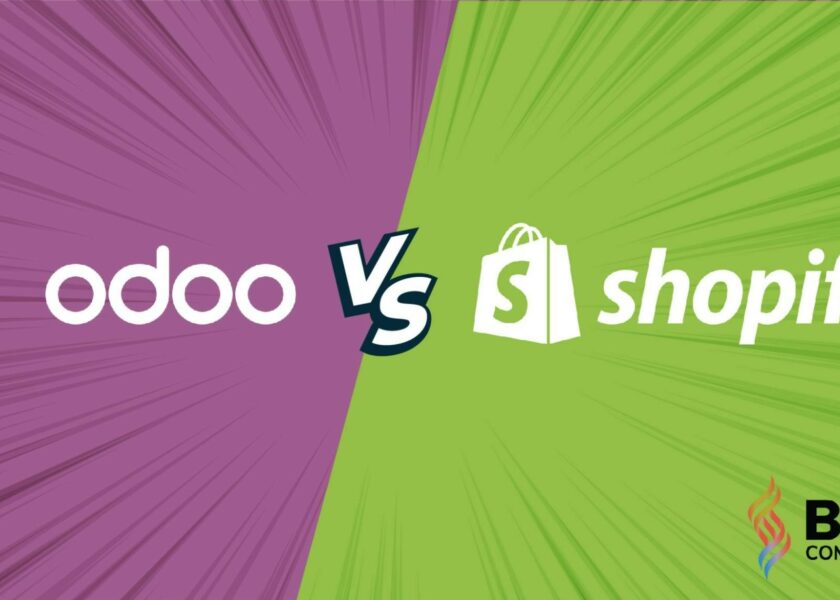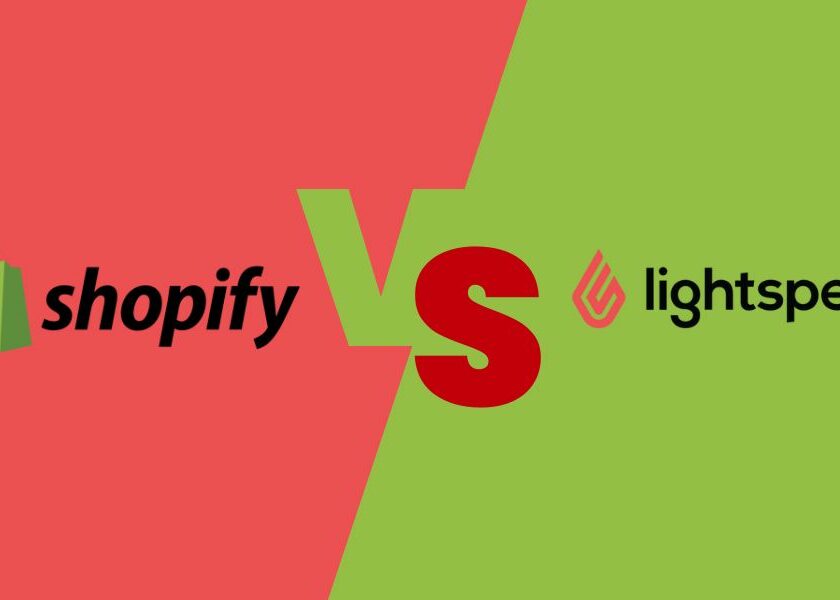Wix to Shopify Migration: Explore 3 Switch Methods for 2024

Wix and Shopify are two globally recognized website builders, each of which is the most deserving and well-known representation of its sector. While Shopify is a famous eCommerce platform that works well for the production of small-to-large full-featured online businesses, Wix is an all-in-one website builder specializing in creating all types of projects. So is it a wise choice to switch from Wix to Shopify?
Despite the system’s extensive capabilities and tools, Wix is not the ideal solution for developing large eCommerce projects. This is due to the system’s functionality limitations.
But how to migrate from Wix to Shopify? If you already have a Wix-built web store and want to expand it, you may discover that you need a more useful and roomy website. This means it’s time to consider Wix to Shopify migration.
Take a look at what this post is about!
Contents
- Is It Worth To Transfer Website from Wix to Shopify?
- A Quick Note On Migrating From Wix To Shopify
- How To Transfer From Wix To Shopify?
- Bottom Line
Is It Worth To Transfer Website from Wix to Shopify?
Yes, it is worthwhile. This is a wise choice if you plan to promote your company online and expand into other areas. Apart from the need to grow your business, you may have different motivations for switching from Wix to Shopify.
While Wix is an excellent tool for novices, it is not designed to handle large-scale eCommerce applications. On the other hand, Shopify has more than shown its worth; the platform claims to have assisted over 1,000,000 merchants in generating combined revenues of more than $200 billion.

So, if you want more features and greater bandwidth to run your store smoothly, it could be time to learn about how to migrate from Wix to Shopify.
If you are still confused, consult Shopify Pricing Plans: Which Is The Right Choice For Your Store In 2024 to find the option that best suits your budget and business size.
The platform has solidified its position as the market leader in eCommerce websites, thanks to its comprehensive range of all-in-one platform technologies. Shopify has updated to match client demands and its simplicity and better user experience features. For example, Shopify’s social media capabilities and tools enable sellers to communicate with and offer products to buyers directly on the platform, cutting through a crowded marketplace. There are additional options for creating discount codes, developing a customer profile, and making returns and exchanges simple.
Moreover, Shopify has an upgraded POS system that Wix and many other market platforms do not. You can manage your offline and online activities and process payments if the POS is linked to PayPal.
Finally, Shopify’s customer service representatives are available 24 hours a day, seven days a week. You can contact them through Live Chat, email, phone calls, and social media. In comparison, phone help is only available to Wix VIP subscription subscribers, which is disappointing.
A Quick Note On Migrating From Wix To Shopify

Before continuing with how to switch from Wix to Shopify, you should note some information.
First, migrating a whole store to a new platform is a two-step procedure requiring you to transfer both the site (including all content) and your domain name, allowing customers to discover you. A customer would find it inconvenient to search your domain name only to discover a broken or outdated link since your material has been removed. Fortunately, there are various options for finishing this process.
This post will walk you through migrating from Wix to Shopify in 3 ways: using straight in the Shopify platform, using a Shopify app, and leveraging Shopify experts. Each of these ways allows you to migrate your site from Wix to Shopify, but they differ in migration time, price, and ease of use.
Next, ensure that you have adjusted your website and SEO settings before you begin any activity so your content does not lose its position in search engine results.
Read more: Wix vs Shopify: Which Is Better For Your Business Success
How To Transfer From Wix To Shopify?
Option 1: Wix to Shopify Migration Free – Using Shopify Directly
How to switch from Wix to Shopify using Shopify directly? This is the most direct and least expensive way to do it. However, a word of caution: this migration method is more time-consuming and requires a bit more effort. Besides, if you are not confident and have a lot of doubts, this approach can lead to some risks such as data loss or incompatibility, and so on. You should think before you start!
Step 1: Registering With Shopify And Site Setup Process
Here are step-by-step guides on how to import products from Wix to Shopify. Let’s read on!
First, you need to create a Shopify site so you may import your content. Simply click one of the green buttons on Shopify’s main page.

If you don’t already have a Shopify account, you’ll be requested to enter some information. Aside from the standard email and password, you’ll also need to provide the name of your store.
Following that, you’ll see a brief loading page while Shopify creates your site, and then you need to enter some additional information. Simply answer the questions and be prepared to enter your store’s address. Even if your only address is your home address, you must have one. Otherwise, you will not be compensated.

After that, you’ll be led to a landing page with a few following actions. Begin with the Customize Theme options.
When you click the Customize Theme button, you’ll be taken to a new screen with even more options. You can change the colors and branding on your current theme or choose a different template entirely.

Shopify provides several free and paid themes. You can also upload ones purchased from third-party sources such as ThemeForest.
Further Reading: 100+ Best Shopify Themes Collection For Each Store Model.
Step 2: Copying Your Content Over
Make sure to prepare your standard pages before copying your content from Wix to Shopify. Check out the guide here.
First, return to Wix and log in to your dashboard.
You should be able to export your store’s items, contacts, and other entities into CSV files from this page. Each entity should be exported into its file.
Then, choose the part that lets you import CVS files. Only one CVS file can be imported at a time.

For example, you must first upload a list of all your products. Then you may repeat the process with the customer lists, and so on.
Take note that Shopify has site builder capabilities that allow you to alter your design and layout. You can only customize the home page layout.
Every other page adheres to a straightforward layout dictated by the theme you’ve chosen. To create a consistent experience, all of your product pages will appear similar. The same is true for additional content pages and blog articles.
The homepage builder works on the same concept as many other site builders in that it does not provide actual drag-and-drop design. Instead, you can select from various pre-made content blocks that include text and image placeholders. Then you simply enter your actual content into the fields given.
All adjustments are made using the sidebar on the left side of the screen. Click on “Add Section” to add new content, and you’re all set.

You can refer to the Top 8 Best Shopify Page Builder Apps For Your Online Store if you want to upgrade your page more professionally.
Step 3: Checking Back With Your Shopify Store
Everything must be displayed the way you want people to view it when they first visit your website.
Return to your dashboard and continue the manual process of entering more descriptive descriptions if you’re satisfied with how everything looks. Indeed, the more precise they will look if you take the time to carefully fill out all of the fields (product names, features, prices, meta descriptions, and so on).
Luckily, your site will benefit from all of the design options available, from fully configurable templates to specialty apps tailored to your specific retail offerings and sector.
Furthermore, Shopify may have overlooked other descriptions, which you should complete as well. It has a plethora of product inventory widgets to help you keep track of the products you have in stock and how close you are to selling out of a specific item.
Step 4: Transferring Your Wix Domain To Shopify
Before going on to additional transfer possibilities, you should understand how to move your Wix-purchased domain name to Shopify.
The following is how to transfer domain from Wix to Shopify
- Sign in to Wix and navigate to the “My Domains” tab.
- Choose the domain you wish to transfer, then choose the “Advanced” button, followed by the “Transfer away from Wix” tab.
- When requested, enter the correct EPP code to your email address. Due to ICANN rules, you will not be permitted to transfer the domain if you bought it within the last 60 days.
- Next, select the Shopify domain transfer method you want to use. The complete migration should take no more than 3-5 days.
- Update all of your needed Shopify dashboard settings to ensure that your tax, payment, and service options remain consistent.
Keep in mind that your store’s name will also be its subdomain. That is, if you call your shop “Birthday Cake,” you may find it at “birthdaycake.myshopify.com.” However, you can easily change the “myshopify” domain later.
Option 2: Using Third-Party Tools
If you don’t have robust technological experience, migrating your e-commerce store can take a long time and effort. Thus, as said above, the second way for Wix to Shopify migration is by using third-party tools (a Shopify app).

Using an automatic transfer solution, in my opinion, is a more efficient alternative for migrating your online business. The following are some of the advantages of using a migration tool service:
- The tools are simple to use and do not necessitate any coding application on the user’s part.
- You can migrate your stores to a new e-commerce platform in a short period.
- A customer service staff will assist you during and after the relocation process to ensure that everything goes smoothly.
This method appears handier at first glance because you don’t have to worry about the process and can just wait for the outcome. However, as you begin to review the results, you may see a slew of errors that could jeopardize the safety and functionality of your website.
Furthermore, website migration tools are typically expensive, and it makes no sense to pay for services that may not be useful in the long run and may cause problems that will affect your new project. As a result, using a third-party tool is not the most excellent method for how to transfer products from Wix to Shopify. Something may not go as planned, resulting in a waste of your time and money.
Option 3: Choosing Shopify Migration Service From the Development Agency
Switching from Wix to Shopify is a lot of things to take care of, and you can complete the operation on your own provided you understand the fundamental stages and unique subtleties of each platform. Otherwise, numerous services offer website transfer.
If you don’t want to take time with manual Wix to Shopify migration, it’s a good idea to employ specific services to handle the process for you. This option includes either online services that offer automatic website migration or the support of Shopify specialists who will conduct all of the stages separately.
In addition, a Shopify development agency will guarantee the success of your Wix to Shopify transfer. Because of this, you no longer need to be concerned about the disadvantages of the two methods above, but you can rest assured to wait for the results.
It makes sense to delegate this responsibility to professionals. Thus, BSS Commerce – Shopify Migration Agency is the top choice for Wix to Shopify migration. This solution can handle all steps of the website transfer procedure on your own because the specialists will take care of all of the steps for you. You have to order the service and wait for the results.

Simultaneously, you must be prepared to discuss all of the details of your order, price factors, timelines, migration requirements, your web store characteristics, and other must-have topics in-depth to avoid complications later.
Bottom Line
When it comes to creating a vast, full-featured online store with hundreds of products and many functionalities, choosing a feature-rich platform is essential. Wix and Shopify are two well-known systems, and you may create a web store with either of them. Everything is dependent on your eCommerce needs and specifications.
While Wix is an excellent site-building platform for beginning store owners, there’s a reason Shopify is so popular. If you already have a Wix-based store and want to upgrade its features, switching to Shopify is a viable option that will eventually pay off. That isn’t because Wix isn’t a good eCommerce platform. This is because Shopify is a specialist eCommerce platform initially designed to establish massive online hypermarkets.
Moving from Wix to Shopify is your best bet if you want to take your store to the next level. Utilizing a slew of personalized, technically diversified web features and applications and connecting with more people daily.
With so many possibilities for moving, you’ll be relieved to know that your data will remain safe, secure, and correct as it transfers, allowing your store to continue operating normally.
Discover more interesting posts from the BSS Commerce Shopify:



